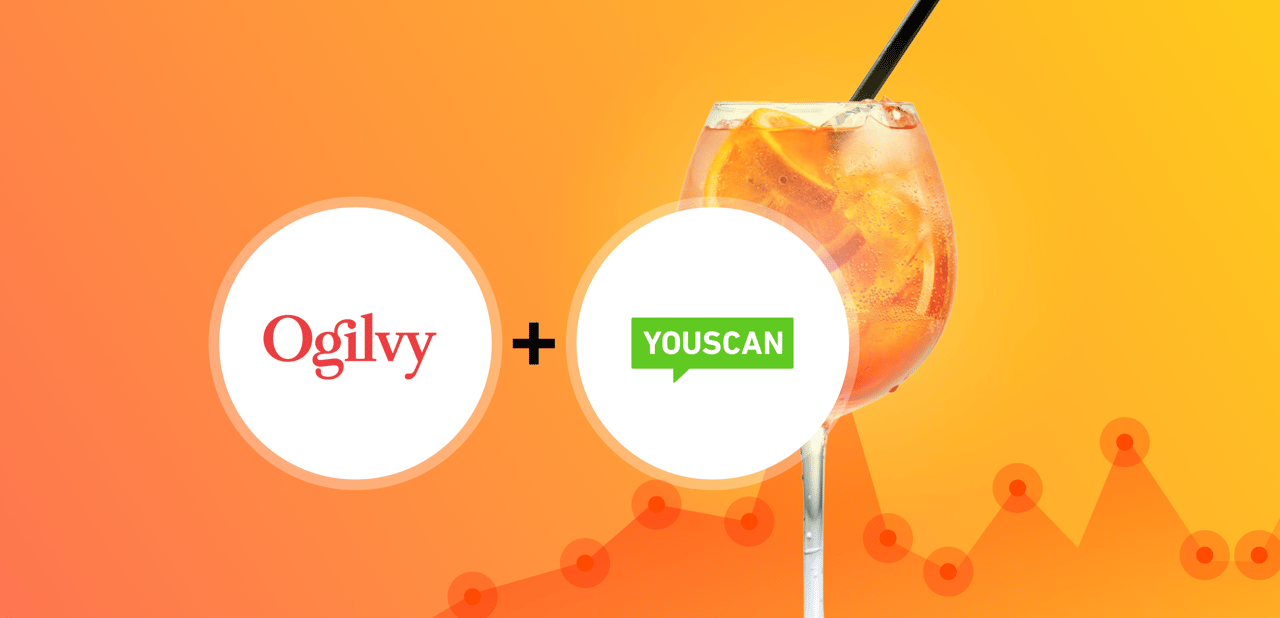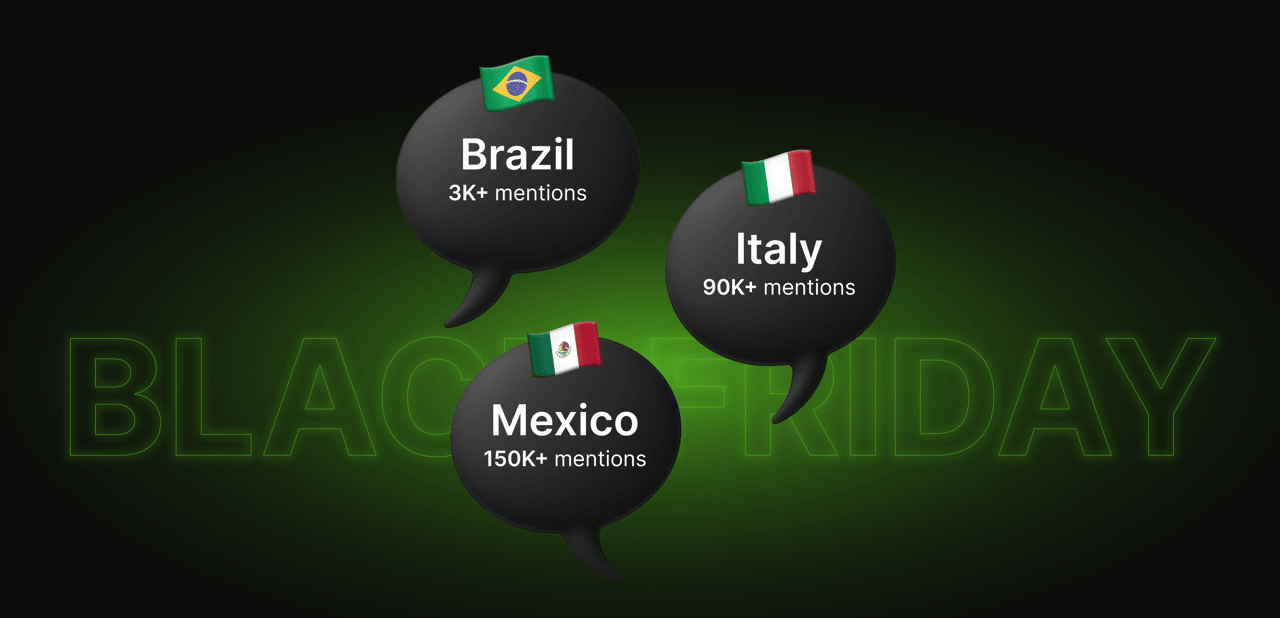Social Listening vs. Social Monitoring – Key Differences & Best Practices

If you’ve ever wished you could read minds, you’re not alone. Businesses worldwide would love to know exactly what their customers think, feel, and want—before they even say it out loud.
While actual mind-reading is still science fiction, social media listening comes remarkably close. By analyzing online conversations, businesses can predict trends, gauge sentiment, and refine their strategies in ways that were unimaginable just a decade ago.
But social media listening doesn’t exist in a vacuum—it’s built on social media monitoring, tracking brand mentions, keywords, and discussions in real time. Although these two terms are often used interchangeably, they serve different purposes.
Both are essential to a strong social media strategy, but knowing when and how to use each can make all the difference.
In this guide, we’ll break down the key differences between social listening and social monitoring, show you how to use them together, and share best practices for getting the most out of your data.
Let’s dive in!
What is social listening?
Social listening is the bigger-picture approach to understanding what people say about your brand, industry, or competitors on social media platforms. Instead of tracking individual mentions, social listening analyzes conversations and provides valuable insights—looking at sentiment, trends, and emerging topics across social media, blogs, forums, and review sites.
Think of it as reading between the lines. It’s not just about knowing that people are talking about your brand—it’s about understanding how they feel, why they think that way, and what that means for your future strategy.
For example, imagine a coffee brand noticing increased social media posts complaining about iced coffee tasting “too watery.” Through social listening, their social media manager detects a pattern of negative customer sentiment around dilution issues. Instead of reacting to each comment individually, they use this insight to launch a new line of extra-strength iced coffee, solving a widespread issue before it becomes a major complaint.


What is social media monitoring?
Proactive social media monitoring is about real-time brand tracking—keeping an eye on direct brand mentions, customer feedback, and industry discussions as they happen. If social listening is about understanding trends, social monitoring is about staying alert and responding fast.
This approach is essential for:
Customer service: Responding to questions, complaints, and reviews.
Reputation management: Addressing negative comments before they escalate.
Crisis control: Spotting and resolving issues as soon as they arise.
For example, imagine a customer tweeting:
"Just got my new headphones, but the left earbud isn’t working. Super frustrating!"
A company using social media monitoring tools would immediately catch this mention and respond with:
"Sorry about that! Send us a DM, and we’ll send a replacement your way."


By engaging quickly, the brand prevents frustration from escalating and turns a potential PR issue into a positive customer experience.
Social monitoring isn’t about deep analysis—it’s about immediate action to address customer concerns. It’s like having a digital customer support team, ensuring no comment, complaint, or compliment goes unnoticed.
Key differences between social listening and social media monitoring
While social media listening and social media monitoring are often used interchangeably, they serve distinct purposes in your social strategy.
Social media listening is a way to gain a deeper understanding and strategic insights from relevant conversations on social media, blogs, forums, and review sites. Instead of reacting to individual mentions, it focuses on trends, sentiment, and audience behavior.
On the other hand, social monitoring is about reacting to social media crises, engaging with your target audience in real time, and fostering a strong brand message. Monitoring social media means tracking direct mentions, customer feedback, and brand-related discussions to ensure quick responses.


A simple way to think about the difference is this:
Social listening is like market research—it helps you analyze social listening data to identify emerging trends and plan.
Social monitoring is like customer service—it ensures you stay engaged and responsive to address customer needs.
For a well-rounded social media strategy, you should use both social media monitoring and listening. This leads us to our next chapter: How can we use monitoring and social listening together?
How to use social listening and social media monitoring together
Let’s say you’re a social media manager for a global restaurant chain. One evening, tweets start rolling in:
"I booked a table, but they lost my reservation. Super frustrating!"
"Tried calling three times—no answer. Do you even check your phones?"
Through social media monitoring, you catch these complaints immediately. Your team jumps in:
"We’re so sorry for the mix-up! DM us your details—we’ll make it right."
Customers appreciate the quick response, and potential PR damage is avoided. Problem solved? Not quite.
You decide to dig deeper with social media listening. Looking beyond direct mentions, you analyze broader conversations about your brand and competitors, discovering customer sentiment about different aspects of your service. A pattern emerges—complaints about slow reservation systems and long wait times.
People aren’t just frustrated with a one-time mistake from your staff; it’s an industry-wide pain point. The opportunity emerges for you to not only fix your situation but also top rival restaurants and attract competitor's customers. Now, instead of fixing individual issues, you bring the insights to the restaurant managers.
A few months later, the restaurant launched an improved booking system with automated confirmations and live chat support. The complaints disappear, and positive reviews flood in:
"Finally! Booking a table here is easy now. Love it!"
That’s the power of using social monitoring and listening together. One keeps you responsive in the moment and the other drives real change.
Best tool for social listening and social media monitoring
Choosing the right tool for your social media strategy depends on what you need—real-time tracking of your social media channels (social monitoring) or deeper insights from various social media platforms (social listening).
Social listening tool: analyzing the bigger picture
Social listening tools go beyond tracking mentions. They analyze sentiment, trends, and audience behavior to help businesses make strategic decisions. These tools help brands understand not just what is being said but why it matters.
YouScan
YouScan is more than just a social listening tool—it’s a comprehensive consumer intelligence platform that provides text and visual analysis to help brands understand online conversations at a deeper level.
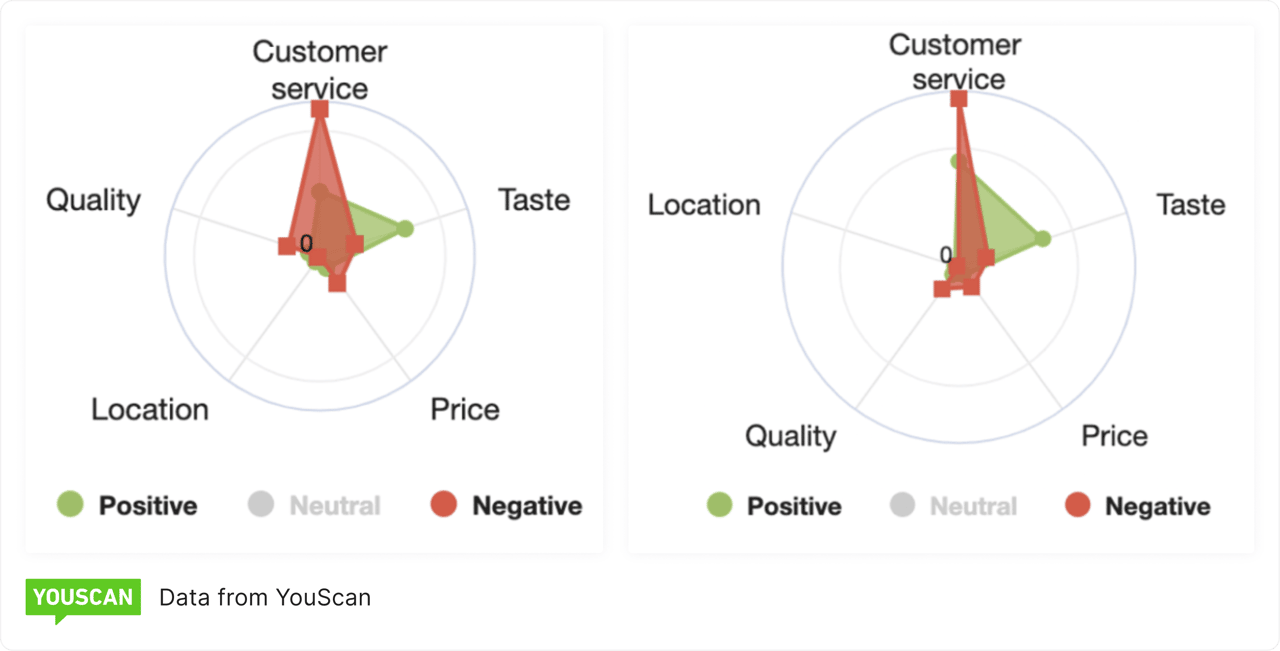

While many tools focus solely on tracking keywords, hashtags, and mentions, YouScan goes further by incorporating AI-powered image recognition. This allows you to analyze logos, objects, scenes, and even emotions expressed in visual content—an area often overlooked in traditional social listening. This is especially valuable for industries like FMCG, fashion, automotive, and hospitality, where consumers frequently share images without tagging the brand directly.
Additionally, YouScan offers:
Precise insight into customer sentiment: Instead of just tagging conversations as positive or negative, YouScan pinpoints what your customers love or dislike about specific features so you can make targeted improvements.
Early detection of trends and crises: YouScan spots shifts in conversation early, whether they’re a rising trend or a brewing PR issue, so you can take action before they go viral.
Comprehensive audience profiling: Beyond tracking conversations, YouScan identifies who’s talking by segmenting users based on demographics, interests, and behaviors, helping you tailor your messaging.
Multilingual sentiment analysis: With advanced natural language processing, YouScan accurately detects sentiment across multiple languages, dialects, and slang, so you can understand your audience no matter where they are.


Social media monitoring tools: tracking mentions in real-time
Social monitoring tools focus on real-time alerts and engagement. These tools help businesses stay on top of direct mentions, customer feedback, and industry conversations as they happen.
Hootsuite
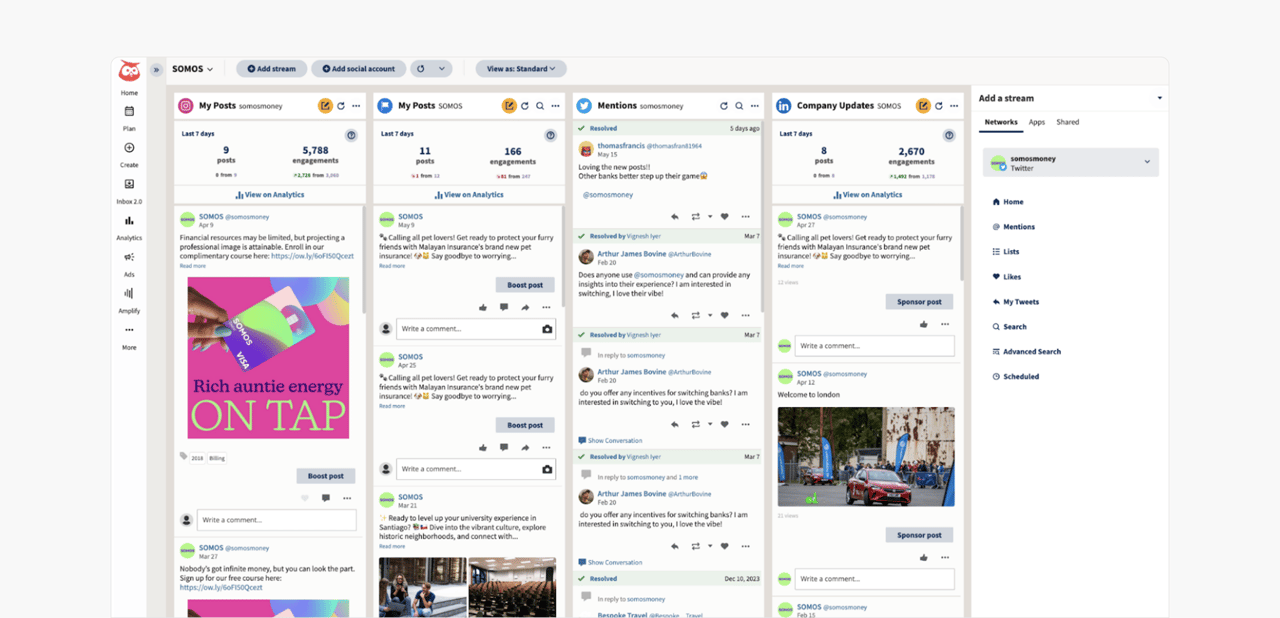

Image source: G2
Hootsuite is primarily known for social media management, but it also offers basic social monitoring features. It tracks mentions, hashtags, and brand names across platforms, making it an excellent option for teams that want to combine monitoring with content scheduling.
Mention
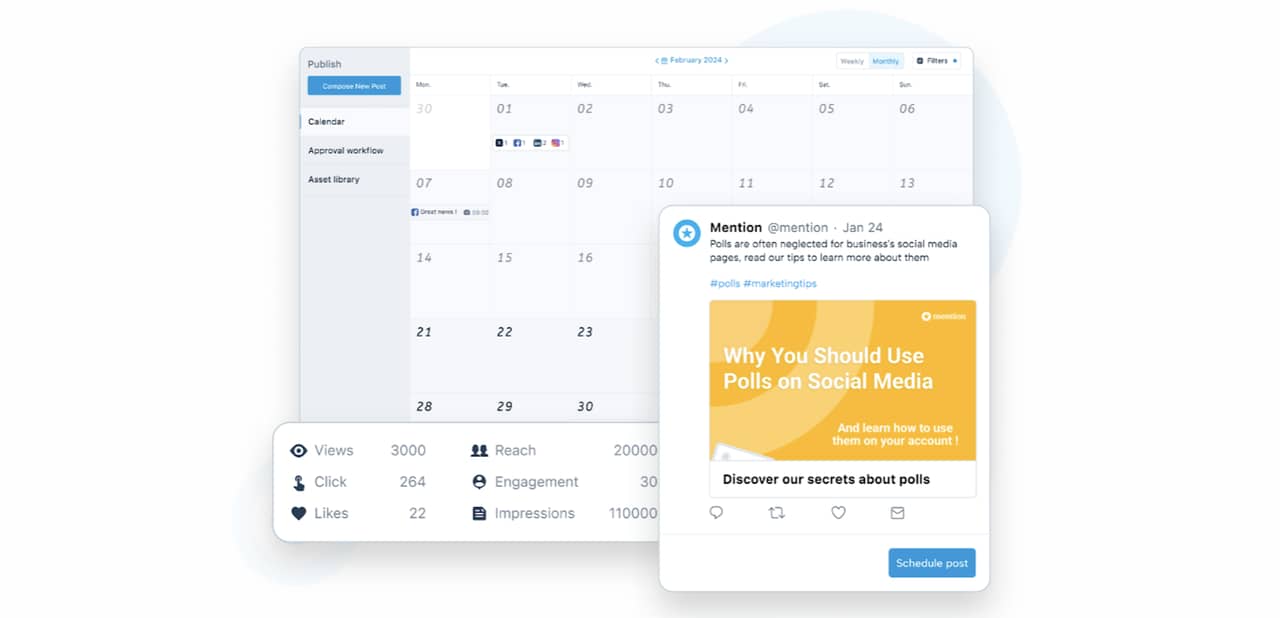

Image source: G2
Mention provides real-time alerts for brand mentions across news sites, blogs, and social media. It’s useful for businesses that need instant notifications when their brand or competitors are discussed online, making it a good fit for reputation management.
Google Alerts
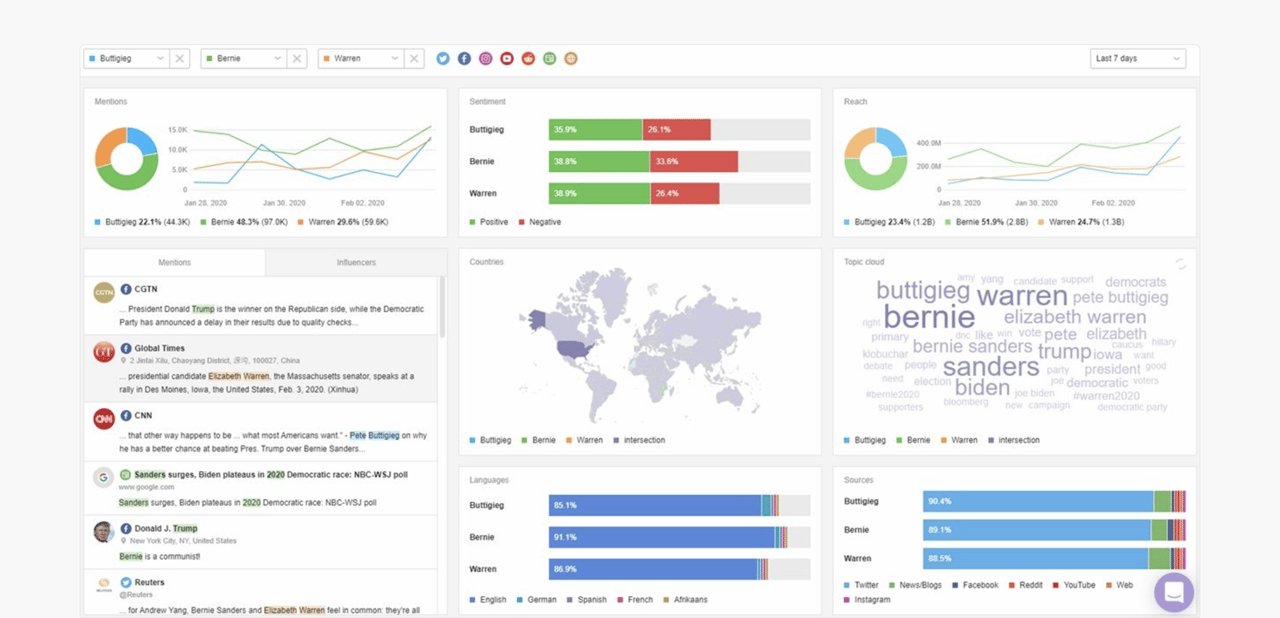

Image source: Google Alerts
For businesses on a budget, Google Alerts is a free tool that tracks mentions of specific keywords across the web. While it lacks the depth of dedicated monitoring tools, it’s a solid starting point for small businesses or those just getting into brand monitoring.
Social monitoring tools at a glance


Which tool is right for your business?
A social listening tool like YouScan can provide deeper insights into sentiment, trends, and audience behavior alongside Sprout Social, Brandwatch, or Talkwalker.
If you need real-time tracking to respond to customer feedback and mentions, use a social monitoring tool like Hootsuite, Mention, or Google Alerts.
For a well-rounded strategy, combining both social listening and monitoring tools will help you stay responsive while shaping a long-term strategy.
Best practices for effective social listening and monitoring
Social monitoring and listening together can transform how your brand connects with the audience—but only if done right. Many businesses make the mistake of relying too much on one method, reacting to mentions without seeing the bigger picture or collecting insights without acting on them. To get the most out of both strategies, follow these best practices:
1. Track more than just mentions
Don’t limit monitoring to direct brand mentions. Customers don’t always tag businesses when they talk about them. Use keyword tracking, industry terms, and competitor names to catch indirect conversations.
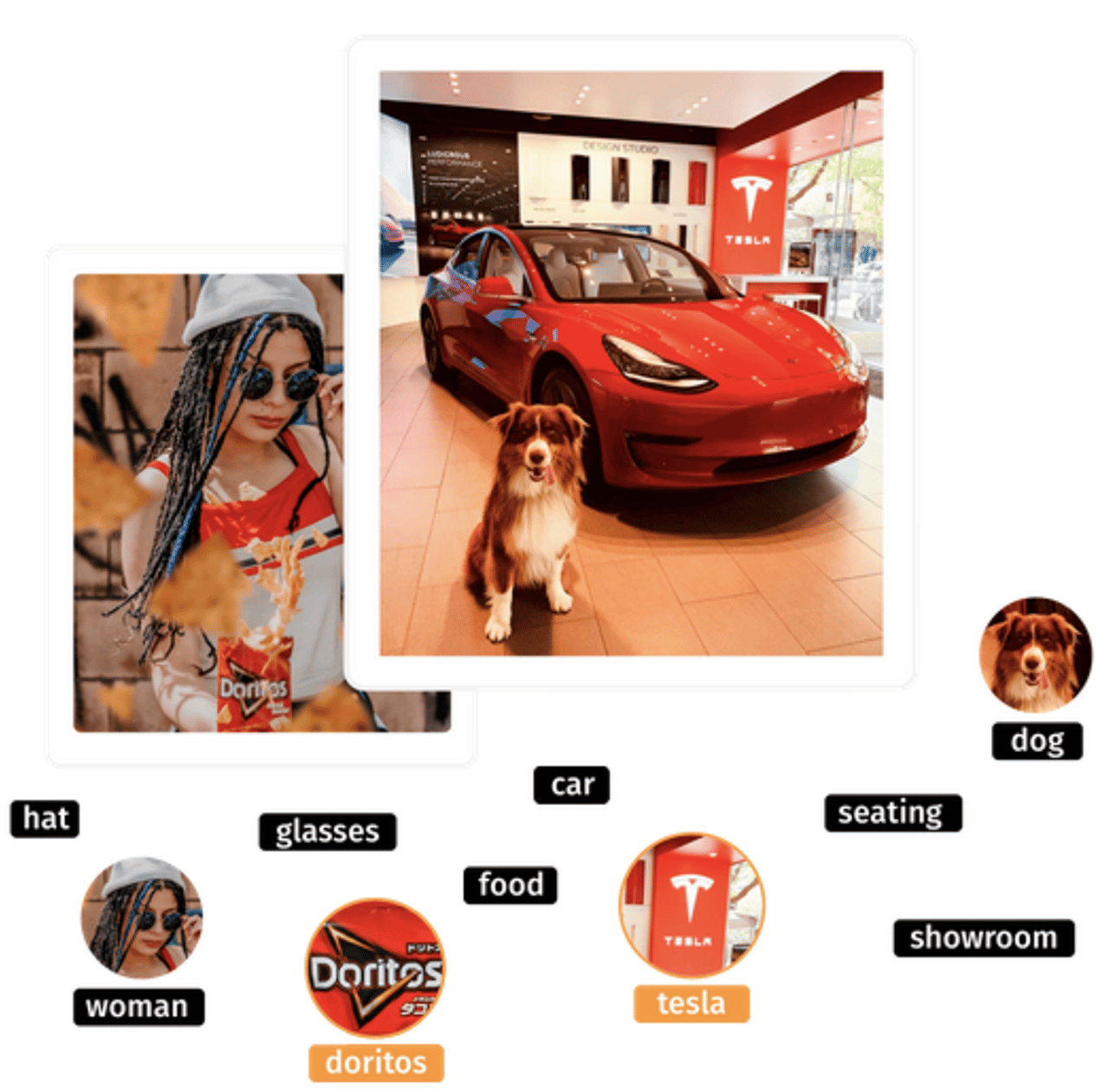

Sophisticated solutions such as YouScan's AI-fueled visual recognition can be of great help in this endeavor to find your brand name even when it's not explicitly typed out.
2. Pay attention to sentiment, not just volume
A spike in mentions isn’t always a good thing. Analyze sentiment to understand if people are praising or criticizing your brand. A trending campaign might bring attention, but if sentiment is negative, it could be a PR disaster in disguise.
That's why the pair of monitoring and social listening is crucial—listen, and listen very carefully.
3. Respond fast—but strategically
Real-time monitoring is about engagement, not just observation. Acknowledge customer feedback quickly, but don’t rush responses in a crisis. Thoughtful replies show customers you care without escalating issues.
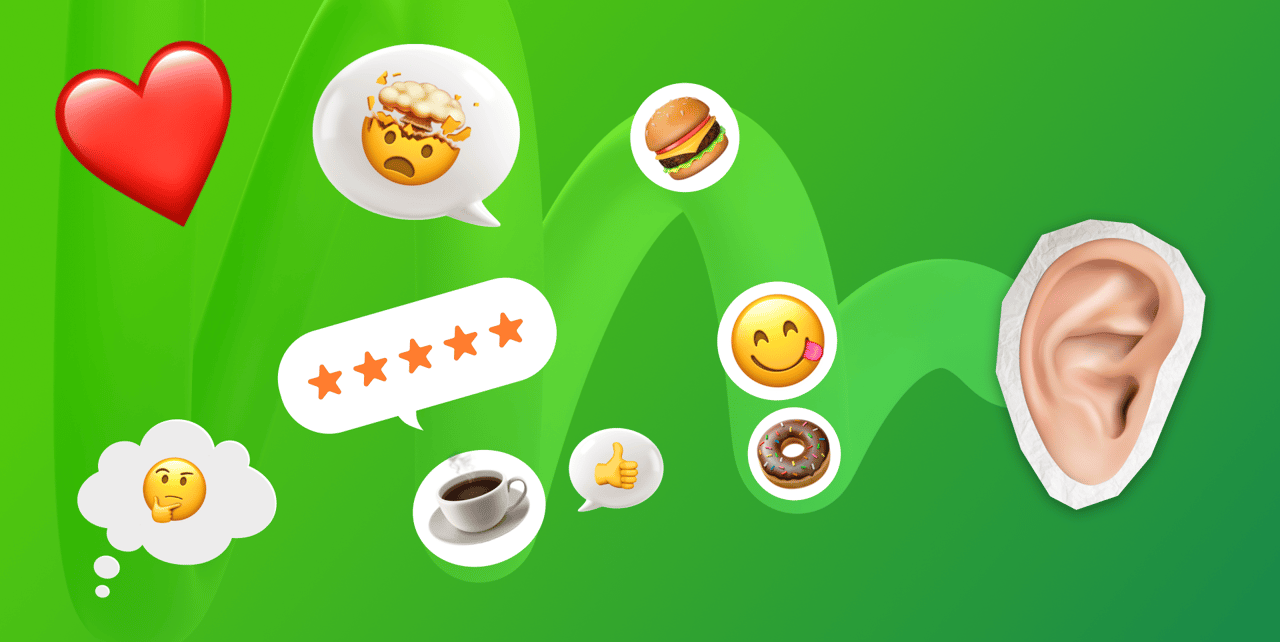

Address negative mentions, reward the brand advocates, and show honest care for your audience.
4. Identify patterns and recurring issues
One bad review isn’t a crisis, but multiple complaints about the same problem are a warning sign. Use social listening to detect recurring issues—whether it’s slow service, product defects, or a confusing checkout process—and take action before they damage your reputation.
5. Turn insights into action
Social listening is useless without follow-through. If data shows that customers want more vegan menu options or faster customer support, bring those insights to decision-makers. Social media should inform business strategy, not just marketing efforts.
6. Monitor competitors as closely as your own brand
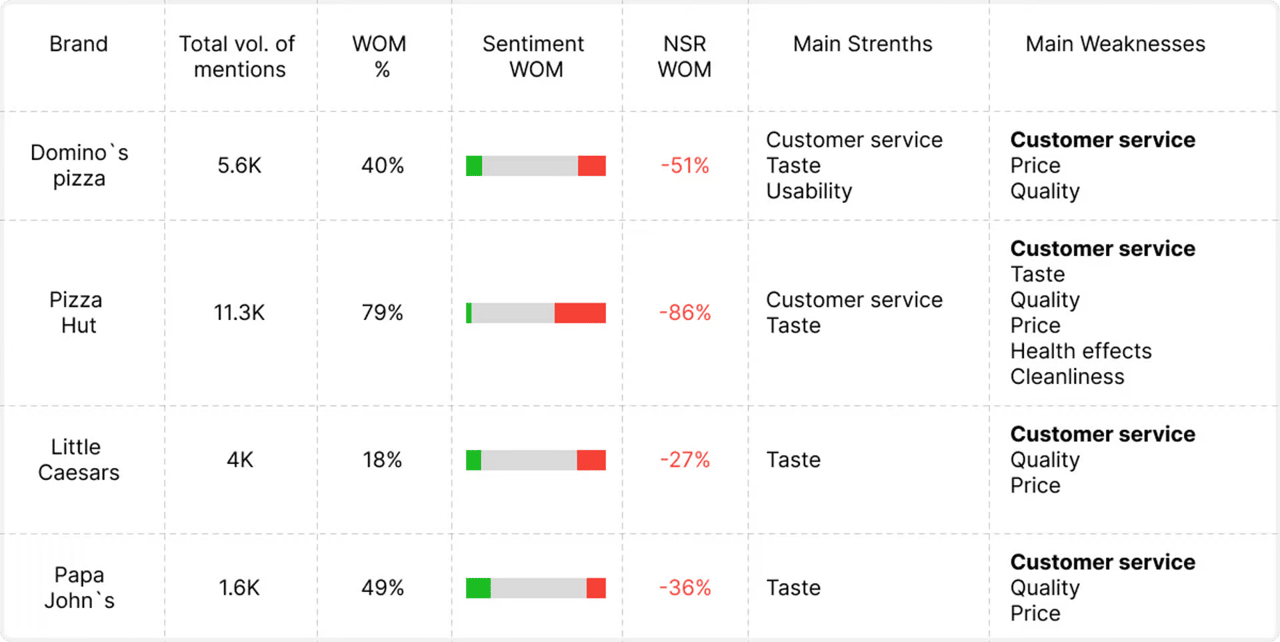

Keeping an eye on competitors helps you spot market gaps, industry trends, and customer frustrations you can capitalize on. For example, if customers complain about a competitor’s long wait times, highlighting your fast service could be a winning move.
7. Automate where possible, but keep the human touch
Social media monitoring tools usually come with a whole set of automation options. The same goes for the modern, AI-based social listening software. These opportunities might get you carried away, thinking you can outsource entire interactions with your customers to artificial intelligence.
AI-powered tools help brands process vast amounts of data efficiently, but personal engagement still matters. Automated alerts and reports are great, but responding with a generic bot message can backfire. Balance automation with real human interaction.
Conclusion
Social monitoring keeps you in the loop. Social listening helps you see the bigger picture. Businesses that use both don’t just react to conversations—they shape them.
If you only monitor, you’re putting out fires but missing the root cause. If you’re only listening, you’re gathering insights but not acting on them in real time. The most innovative brands track customer feedback, spot trends, and turn what they learn into tangible improvements.
Take a look at your current approach. Are you responding fast but missing long-term insights? Or are you analyzing data without engaging with your audience? The best results come from doing both.
Start listening, monitoring, and making better decisions with YouScan — check out our demo today.

